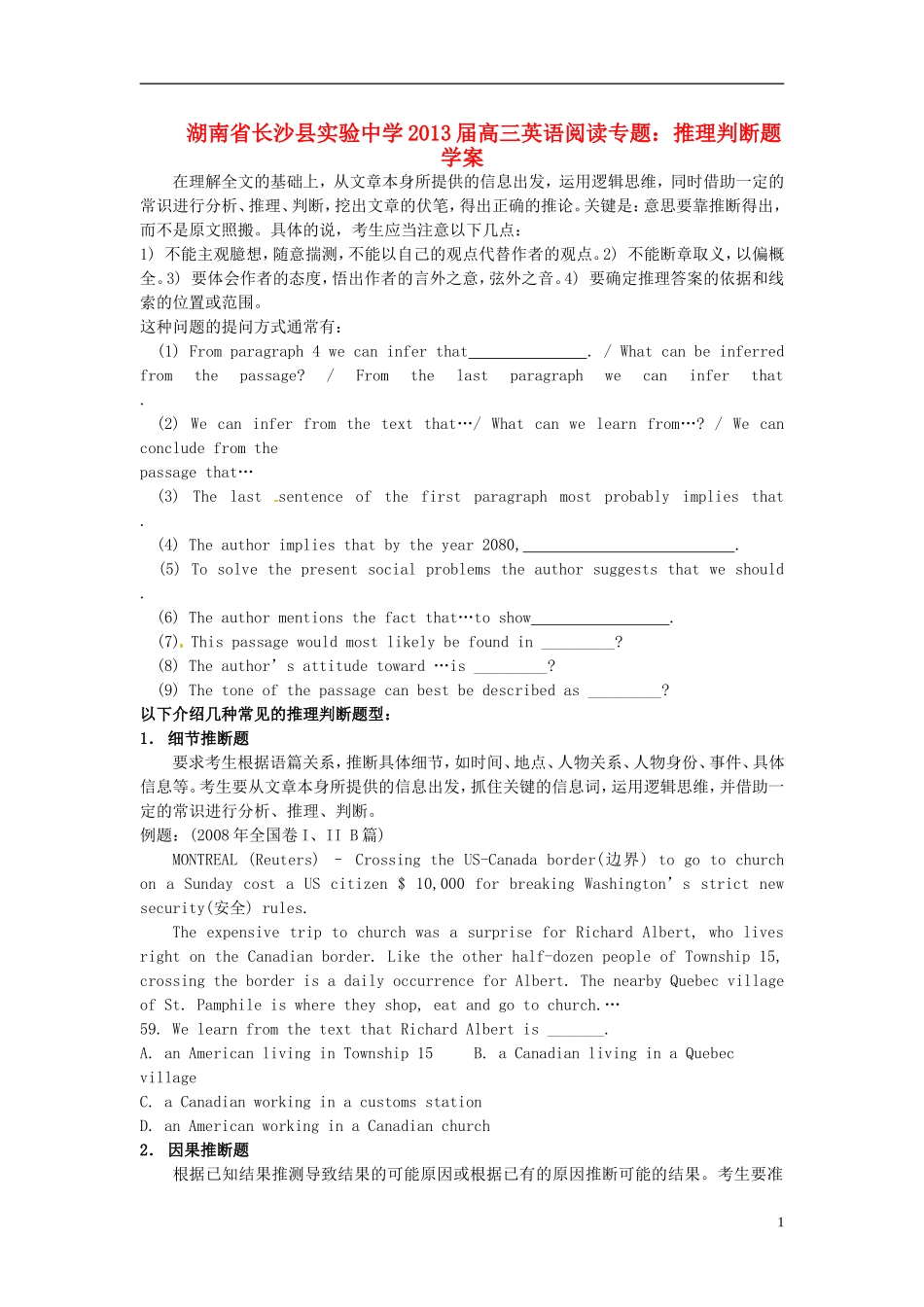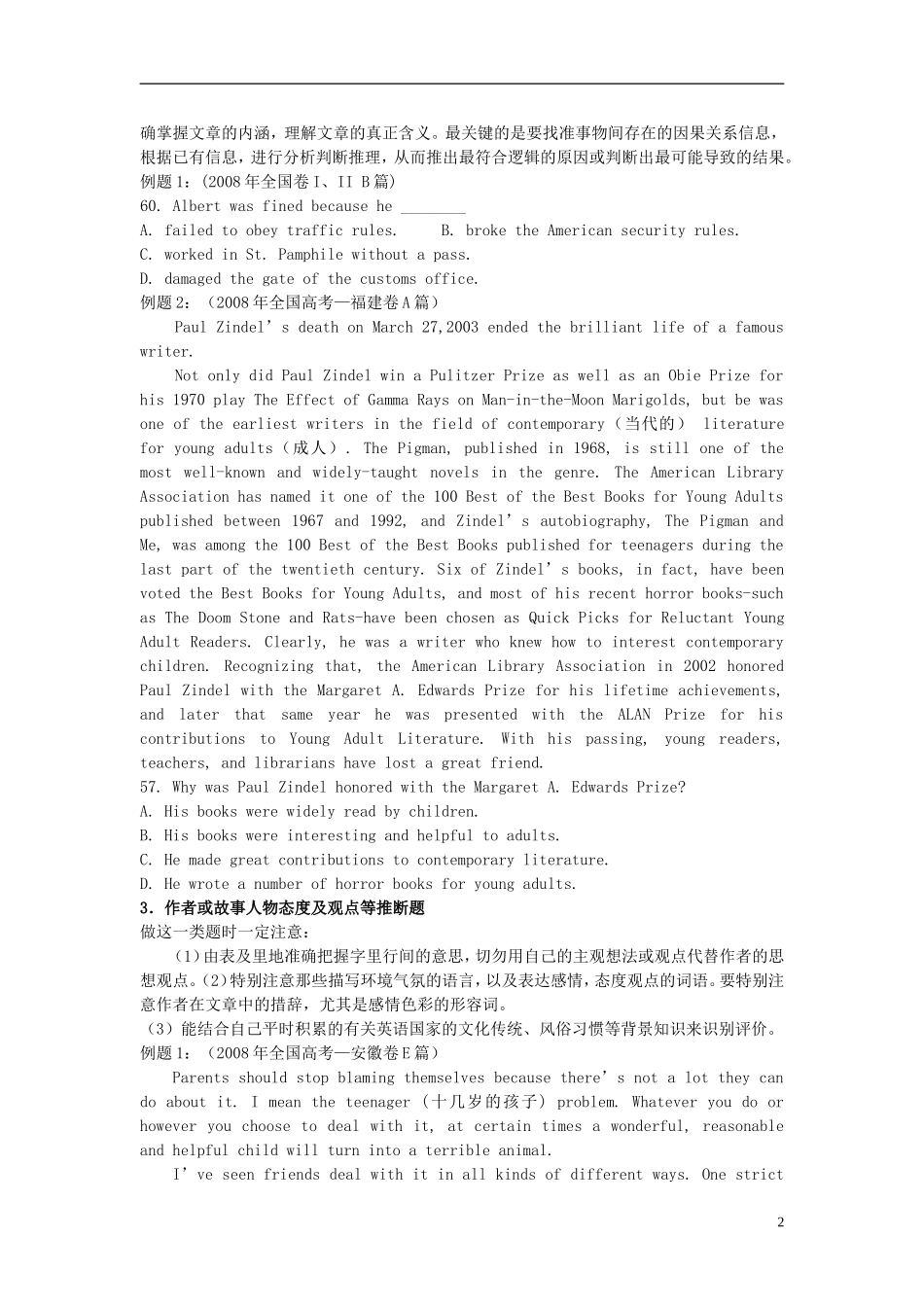湖南省长沙县实验中学 2013 届高三英语阅读专题:推理判断题学案在理解全文的基础上,从文章本身所提供的信息出发,运用逻辑思维,同时借助一定的常识进行分析、推理、判断,挖出文章的伏笔,得出正确的推论。关键是:意思要靠推断得出,而不是原文照搬。具体的说,考生应当注意以下几点:1) 不能主观臆想,随意揣测,不能以自己的观点代替作者的观点。2) 不能断章取义,以偏概全。3) 要体会作者的态度,悟出作者的言外之意,弦外之音。4) 要确定推理答案的依据和线索的位置或范围。这种问题的提问方式通常有: (1) From paragraph 4 we can infer that . / What can be inferred from the passage? / From the last paragraph we can infer that .(2) We can infer from the text that…/ What can we learn from…? / We can conclude from thepassage that…(3) The last sentence of the first paragraph most probably implies that . (4) The author implies that by the year 2080, . (5) To solve the present social problems the author suggests that we should . (6) The author mentions the fact that…to show .(7) This passage would most likely be found in _________?(8) The author’s attitude toward …is _________?(9) The tone of the passage can best be described as _________?以下介绍几种常见的推理判断题型:1. 细节推断题 要求考生根据语篇关系,推断具体细节,如时间、地点、人物关系、人物身份、事件、具体信息等。考生要从文章本身所提供的信息出发,抓住关键的信息词,运用逻辑思维,并借助一定的常识进行分析、推理、判断。例题:(2008 年全国卷 I、II B 篇)MONTREAL (Reuters) – Crossing the US-Canada border(边界) to go to church on a Sunday cost a US citizen $ 10,000 for breaking Washington’s strict new security(安全) rules.The expensive trip to church was a surprise for Richard Albert, who lives right on the Canadian border. Like the other half-dozen people of Township 15, crossing the border is a daily occurrence for Albert. The nearby Quebec village of...


